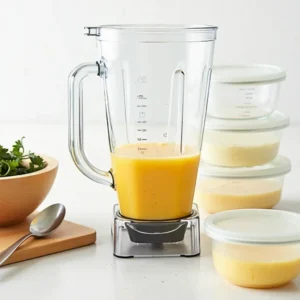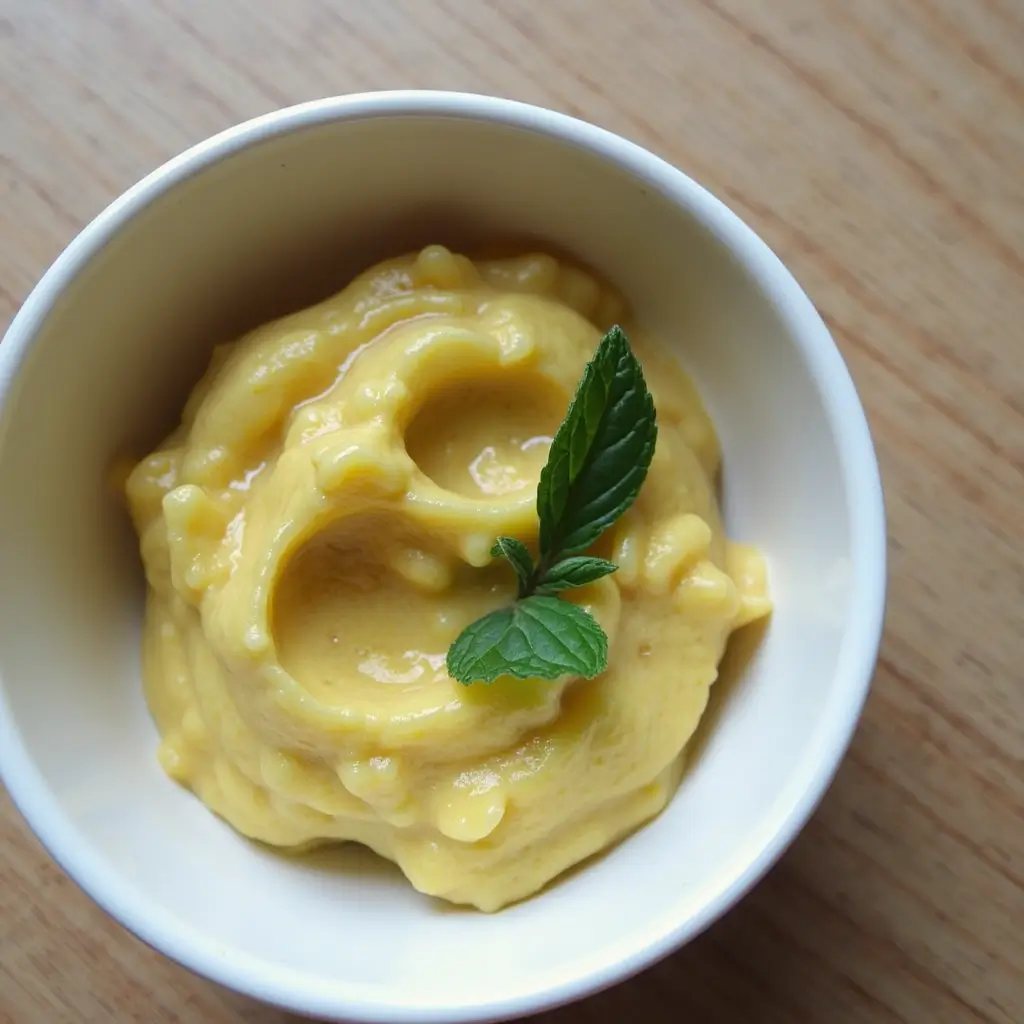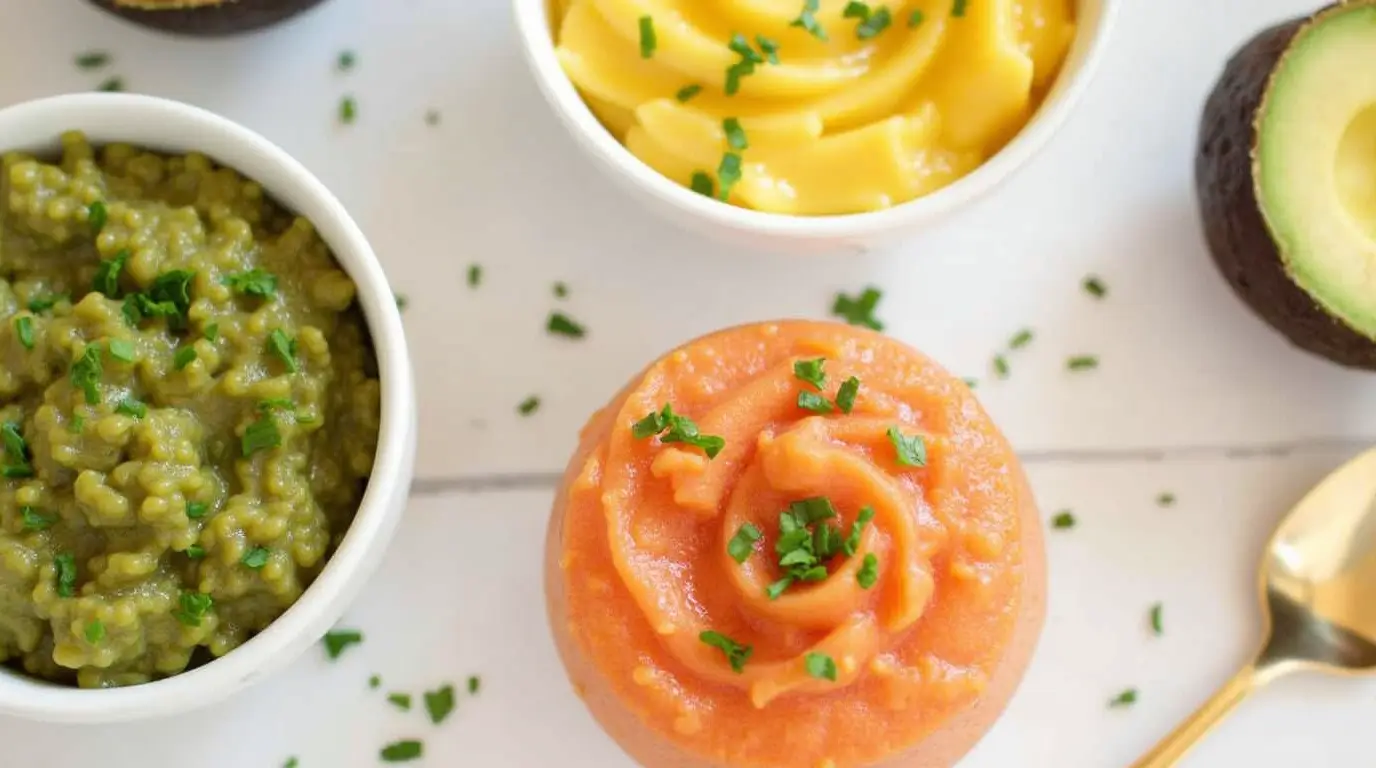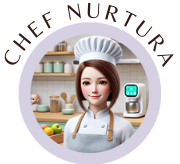Introduction
Introducing solids is an exciting milestone in your baby’s journey toward independent eating. While store-bought baby food is convenient, making homemade purees ensures your little one gets the freshest, most nutrient-packed meals. But did you know how you prepare purees can impact their nutritional value?
Thank you for reading this post, don't forget to subscribe!From choosing the right ingredients to using the best cooking methods, small adjustments can help preserve essential vitamins and minerals. In this guide, we’ll walk you through the best techniques to prepare Purees for Maximum Nutrition, support your baby’s growth, and develop healthy eating habits from the start.
Let’s dive in and learn How to Prep Purees for Maximum Nutrition by making nourishing, delicious purees that set the foundation for a lifetime of healthy eating!
Opting to make your own baby purees offers several advantages:
- Control Over Ingredients: You decide what goes into your baby’s food, ensuring no unwanted additives or preservatives.
- Freshness Guaranteed: Homemade purees can be made from fresh, organic produce, maximizing nutrient intake.
- Cost-Effective: Preparing purees at home can be more economical than purchasing commercial baby foods.
Before we get into the nitty-gritty of preparation, it’s crucial to understand the key nutrients your baby needs:
- Iron: Vital for brain development and found in meats, beans, and fortified cereals.
- Healthy Fats: Support brain and nerve development; avocados and full-fat yogurt are excellent sources.
- Fiber: Aids digestion and is abundant in fruits and vegetables like peas, carrots, and apples.
When choosing produce and other ingredients:
- Opt for Organic: Select organic fruits and vegetables when possible to minimize pesticide exposure.
- Seasonal Selections: Seasonal produce is often fresher and more nutrient-dense.
- Check for Ripeness: Ensure fruits and vegetables are ripe but not overripe to maintain optimal nutrient levels.
Smart Preparation Steps
1. Wash Properly: Start thoroughly, even if you plan to peel. Use cold water and gently scrub to remove any residue.
2. Smart Cutting Techniques: Cut vegetables into similar-sized pieces for even cooking. Smaller pieces cook faster, meaning less nutrient loss.
3. Timing Matters: Don’t prep too far in advance. Cut vegetables just before cooking to prevent nutrient loss from exposure to air.

Cooking Methods to Preserve Nutrients
How you cook your baby’s food can significantly impact its nutritional value. Here are some methods to consider:
Steaming
Steaming is one of the best ways to preserve vitamins and minerals in food. It uses minimal water and cooks food gently.
How to Steam:
- Place a steamer basket in a pot with a small amount of water.
- Add chopped vegetables or fruits to the basket.
- Cover and cook until tender.
Baking or Roasting
Baking or roasting can enhance the natural flavors of fruits and vegetables without leaching nutrients into water.
How to Bake/Roast:
- Preheat your oven to 400°F (200°C).
- Place peeled and chopped produce on a baking sheet.
- Roast until soft and slightly caramelized.
Boiling
While boiling is common, it can cause water-soluble vitamins to leach into the cooking water. If you choose to boil, use minimal water and consider using the cooking liquid to thin your purees.
How to Boil:
- Bring a pot of water to a boil.
- Add the chopped produce.
- Cook until tender, then drain (reserving the liquid if desired).
Equipment Essentials
Having the right tools makes creating nutritious purees easier:
Quality Steamer Basket: Invest in a good steamer basket that fits your pots. This enables proper steaming without waterlogging vegetables.
High-Speed Blender: A powerful blender creates smooth purees quickly, minimizing exposure to air, which can degrade nutrients.
Glass Storage Containers: Glass containers protect nutrients better than plastic and don’t leach chemicals into food.

Pureeing to the Perfect Consistency
Achieving the right texture is essential, especially for babies new to solids.
Steps to Puree:
- Choose Your Tool: A blender, food processor, or immersion blender works well.
- Add Liquid: To reach the desired consistency, add breast milk, formula, or the reserved cooking water.
- Blend: Process until smooth, adjusting the thickness as needed.
Safe Storage Practices
Proper storage ensures that your baby’s food remains safe and nutritious.
- Refrigeration: Store purees in airtight containers in the fridge for 48 hours.
- Freezing: For longer storage, freeze purees in ice cube trays. Once frozen, transfer the cubes to freezer bags, which can be kept for up to three months.
- Reheating: Always reheat purees until they’re piping hot throughout, then cool them to a safe feeding temperature.
Time-Saving Batch Preparation
Efficient prep doesn’t mean sacrificing nutrition:
- Prep Multiple Vegetables Together: Steam different vegetables that require similar cooking times together.
- Portion Immediately: Divide into serving sizes right after pureeing to minimize nutrient loss from repeated temperature changes.
- Label Everything: Mark containers with contents and dates to ensure you use them when nutrients are still at their peak.
Advanced Nutrient-Boosting Techniques
Take your purees to the next level:
- Sprouting and Soaking: Soak legumes before cooking to increase nutrient availability and reduce cooking time.
- Adding Superfoods: Incorporate nutrient-dense foods like chia seeds (ground) or quinoa into purees.
- Herb Enhancement: Fresh herbs add nutrients and flavor to simple vegetable purees.

Adapt your prep methods by season:
1. Summer Vegetables: Quick-steam or prepare raw to preserve nutrients in delicate summer produce.
2. Winter Vegetables: Roast or steam heartier winter vegetables until tender to maintain nutritional value.
3. Year-Round Options: Some vegetables maintain consistent nutrient levels year-round and can be prepped similarly regardless of season.
Troubleshooting Common Issues
Solve these common challenges while maintaining nutrition:
- Too Thick Purees: Add cooking liquid rather than plain water to thin purees, preserving nutrients from cooking.
- Discoloration: Use lemon juice to prevent browning in fruits and some vegetables while adding vitamin C.
- Grainy Texture: Adjust cooking time or blending duration without overcooking to maintain smooth texture and nutrients.
Moving Beyond Basic Purees
As your baby grows:
- Textured Combinations: Gradually introduce more texture while maintaining the same nutrient-preservation techniques.
- Finger Foods: Apply the same nutritious preparation methods to soft-cooked vegetable pieces.
- Family Meals: Scale up these preparation methods to create nutritious meals for the whole family.
Future Planning
Think ahead for continued success:
1. Meal Planning: Create a weekly prep schedule to ensure fresh, nutritious purees are always available.
2. Rotating Varieties: Plan to introduce new foods while maintaining proper preparation methods.
3. Scaling Up: Adjust these methods as your baby grows and needs more food.
Remember, creating nutritious purees doesn’t have to be complicated! By following these guidelines, you’ll create delicious baby recipes that maintain maximum nutritional value. Keep experimenting with different combinations and preparations, always focusing on preserving those precious nutrients.
Your efforts in proper preparation now will help establish healthy eating habits that last a lifetime. Happy pureeing, parents!

